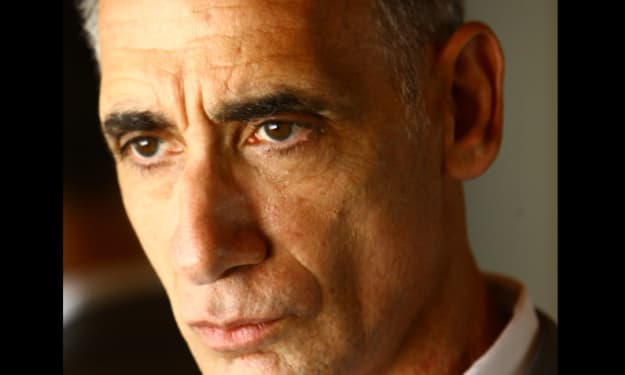How Marketing Undermines Suspense in 'The Girl in the Spider's Web'
Two trailers spoil important plots in 'The Girl in the Spider's Web.'
Two trailers for the new Sony action movie The Girl in the Spider’s Web illustrate something about modern Hollywood marketing that should make you more wary of movie trailers. These two trailers go a long way toward spoiling almost everything about this twisty thriller that thrives on creating suspense—suspense that is drained away almost completely if you watch the trailers.
The illustrative lesson at hand from these trailers is that Hollywood marketers do not care about your experience of the movie. I grant you that this is not exactly a revelation. That said, it’s a fact that we’ve come to take for granted in an era where trailer debuts, and even reviews and watch alongs, have become a staple of movie marketing. Marketers will put anything into a trailer in order to peak your interest and sell you a ticket. How you feel when you are watching the movie and how the trailer spoils the movie don't matter to marketers.
Let’s set the stage: The Girl in the Spider’s Web is the continuation of the story of Lisbeth Salander, a character created by novelist Stieg Larsson for his Millennium series of books, including The Girl with the Dragon Tattoo, The Girl Who Kicked a Hornet’s Nest, and The Girl Who Played with Fire. Larsson passed away in 2005, so he did not write The Girl in the Spider’s Web, which was written by David Lagercrantz and inspired by Larsson’s characters and story.
Here, Lisbeth Salander, our long time protagonist, a hacker with a heart of gold, is played by Golden Globe winner Claire Foy, best known for Netflix’s The Crown. In this story, Lisbeth is confronted by a web of lies and manipulations all leading to a computer program that controls the world’s nuclear launch capability. That’s just the driver of the plot, however, as the family story between Lisbeth and her estranged sister Camilla (Sylvia Hoeks) is the real story and the one that gets ruined by the trailers.
In The Girl in the Spider’s Web, the fact that Camilla Salander is alive is a twist. We learn about her death by suicide in the first act and then she is introduced as having faked her death in the second act before her complete scheme comes into full focus in the third act. I imagine that if I had gone in not knowing about Lisbeth’s sister I might have been able to guess that she wasn’t actually dead from the context of the movie but the revelation certainly would have felt more important had it not been for the spoiler in the trailer for the movie.
The marketers of The Girl in the Spider’s Web place the spoiler about Lisbeth’s sister in the second wide-release trailer, released in September of this year. The first trailer for the movie, which debuted about a year ago, centered almost exclusively on scenes from the opening of the movie where Lisbeth’s place as an avenger of abused women is established as she punishes and blackmails a big business tycoon and though we do also see Hoeks as Camilla in the first trailer, her relationship with Lisbeth is vague and mysterious.
Perhaps that trailer didn’t garner enough buzz because the second trailer pivots to include the fact that Lisbeth’s sister is alive and is the big bad in the movie. Never mind, that director Fede Alvarez builds to this moment as if it were an important, even shocking reveal, Lisbeth's abused sister is alive and now the head of a terrorist organization. But we already learned that in the trailer. The excitement and suspense is gone before we ever got to feel it.
The second trailer also offers our first glimpse of Lakeith Stanfield as an NSA Agent who is on the trail of what Lisbeth has stolen from the American government, that nuclear launch code McGuffin software. Here again, a piece of the building tension of The Girl in the Spider’s Web is ruined as we see Stanfield on Lisbeth’s side in the second trailer, being her savior with a giant gun in a pivotal scene in the film’s final act.
Early in the movie, Stanfield and Foy are deeply at odds. Stanfield's spy needs to retrieve the program that Lisbeth stole from his computer and that is driving the plot for the first act and a half of the movie. Stanfield's spy appears willing to go to desperate lengths on the assumption that Lisbeth is a bad guy looking to profit from this God in the software device, Deus Ex Macbook. The tension of whether he is on her side or against her is supposed to matter and because of the trailer, it doesn't
Stanfield’s inclusion in the second trailer came cynically after Stanfield’s star began to rise with the release of his acclaimed star-making performance in Sorry to Bother You. It’s not hard to imagine that he was included in the trailer solely to capitalize on his newfound buzz and despite the fact that his scenes in the movie are meant to be filled with a tense "which side is he on" vibe that the trailer completely destroys.
The first trailer, however, has perhaps the most damning indictment of just how little the marketers care whether a trailer hurts the experience of the movie. The original trailer for The Girl in the Spider’s Web closes with a confrontation between Lisbeth and Hoeks in which Hoeks says the line that forms the marketing hook for the movie, "Tell me Lisbeth, how come spiders don’t get stuck in their own webs?"
The line itself doesn’t matter but rather the fact that we, whether we want to or not, will go looking for this scene while we are watching the movie. The scene is set at the end of the movie. It’s from the climax of the confrontation between Lisbeth and Camilla, a terrorist and Lisbeth's sister, who is trying to destroy the world, and instead of being a scene with the heightened feel of a proper climax, we get an anti-climax.
We’ve seen this scene in the trailer, there is little else to it aside from Camilla’s fate which isn’t all that unpredictable from the context of what we’ve experienced watching the movie. Had this scene been early in the movie, when we weren’t sure of just who Camilla was or what she might be up to, the scene would be filled with suspense and would make sense as a great trailer scene.
In the context of the film as a whole however, having already seen most of this confrontation and indeed spent much of the film anticipating this scene, we’re not surprised or shocked, and what should be an exciting moment is rendered flat because, contextually, there aren’t many options for what might happen in this scene.
Marketers, however, do not care that this scene needed the juice of uncertainty and surprise. They don’t care that they are spoiling the climax of the movie or taking away from the suspense. They need to sell you a ticket and this scene with its trailer ready dialogue and edgy looking dynamic, high stakes emotions, fits the needs of the trailer. It looks thrilling, it looks high stakes, it appears important and it has that line with the allusion to the title.
For a marketer, it’s a no-brainer. But, in order for it to be a no-brainer they first have to not care for the context and necessity of the scene. They need to not care whether they are undermining the movie by revealing something important. And, in general, they need to not care if they are, perhaps ruining the full experience of the movie for the sake of selling a ticket.
About the Creator
Sean Patrick
Hello, my name is Sean Patrick He/Him, and I am a film critic and podcast host for the I Hate Critics Movie Review Podcast I am a voting member of the Critics Choice Association, the group behind the annual Critics Choice Awards.






Comments
There are no comments for this story
Be the first to respond and start the conversation.